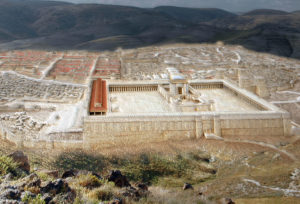THAT’S AN AWFULLY NICE SONG MARY WROTE, the Magnificat – don’t you think?
Have you read that thing?
“Oh, how my soul praises the Lord.
How my spirit rejoices in God my Savior!
For he took notice of his lowly servant girl,
and from now on all generations will call me blessed” (Luke 1:46-48).
Words dance on like that for 10 wonderfully lyrical verses.
And Mary wrote that?
Absolutely not some Bible experts say.
They argue that it’s unreasonable to expect lyrics this majestic to flow impromptu from the lips of a farm girl who took her tambourine to town and wowed the judges at Jew’s Got Talent – which is what it would amount to.
The YouTube description would read: “She got four big yeses and made Simon cry.”
I’m studying the Gospel of Luke and I’m reading the theories about where he got some of the songs he reported.
Of course, there are Bible experts who say Luke simply reported what happened, based on the sources he was able to find.
Others say he did something that some Christian writers do in books that are supposed to be nonfiction: he added some color.
The first time I realized Christian writers were doing this – adding fiction into nonfiction books – I learned it from a well-known physician who worked with a nonfiction co-author.
I was interviewing the doctor for an article I was writing, and we ended up talking about one of his recent bestsellers, which he wrote with the co-author.
The doctor told me that his wife was reading a draft of one of the stories in the book and she asked him if he actually did remember the church bell ringing while he was walking down the street on that particular day.
He said he did not, but that his co-author added it as color, on the basis of the fact that the bell did ring once in a while.
Personally, I don’t think once in a while is often enough. If you are saying it rang while he walked down the street, I want to know you’re telling me the truth.
I personally hate that technique of trying to punch up a nonfiction story by adding fiction. It’s the former newspaperman in me, I guess.
If you’re making stuff up, say so. Otherwise, if I find out some other way, I’m not going to believe anything you say. Ever.
Could it be that Luke wrote the Magnificat to add a little color to the story of two women – Mary and Elizabeth – meeting after they became miraculously pregnant?
As if it needs color.
On the other hand, if Luke got the history right, did someone happen to be standing there beside Mary taking down notes on a wax tablet with a stylus in hand?
Maybe Luke adapted the song from a hymn that Jewish Christians sang later, once he saw how well the lyrics fit with what Mary must have been feeling.
That’s one of many theories we can find in thick Bible commentaries. By thick, I’m talking about one like the 2 ½ inch thick book I have on my desk, which covers only the first 10 chapters of Luke.
I don’t know where the song came from.
I would hate to think that Luke did what some Christian nonfiction writers do all the time.
But even if he did, I don’t think it would undermine my confidence in the basic story.
Still, if Luke did that, and if I had a chance to talk with him about it I would probably ask him the same question I would ask Christian nonfiction writers: if you don’t know what happened why don’t you either take the time to find out or move on to the next thing you really do know that happened?
For more about the Gospel of Luke
Free review books
If you haven’t gotten a free copy of a book from me before, I have some review copies of my newest release A Quick, Guided Tour Through the Bible.
Send me a note and if I still have copies available, I’ll send you one at no cost to you.
I get author copies of books from my publishers, and I don’t sell them. I give them away to help get people into the Bible who might not otherwise go there.


The discipline of “theology”–as we know it–was invented by Thomas Aquinas in the late Medieval period. But don’t for a moment imagine that no one did theology before that. Their approach was not systematic, however. They did theology by way of narrative. That’s the Bible way throughout. This is still the way most of the world does theology, by story telling. It’s the Eastern way, the ancient way.
Put aside your modern Western notions of scientific-historical truth. Such ways of seeing life are alien impositions on the ancient story-tellers of the Bible. Their concern is not what actually happened. They are preoccupied with what God was doing in the events they narrate. How do you do that without ruining a perfectly good story and putting it in the form of dry-as-dust theological abstractions?
Despite the imaginations of journalists, there is no such thing as uninterpreted reporting. That you put it in the paper at all is a judgment that it is important. That you put it on the front page is an evaluation that it is REALLY important and that the prospective audience will care about this. No one has all of the facts. Consider accident reports from eye-witnesses. You always have a perspective. That’s the contribution of the premodern and postmodern ways of thinking.
If God is involved in an event, no reporter–as a reporter–can tell that story adequately. So how does one tell that story? A lot like Luke tells his. Does he just make stuff up? Of course, not. But if an uninspired reporter were covering the same story, it would be very different. And which story is more truthful? The one of the atheist or the one of the theist?
Hey, thanks George.
For the rest of the world, George is one of my favorite NT scholars. When I worked as an editor, he was my go-to guy for the hard stuff.